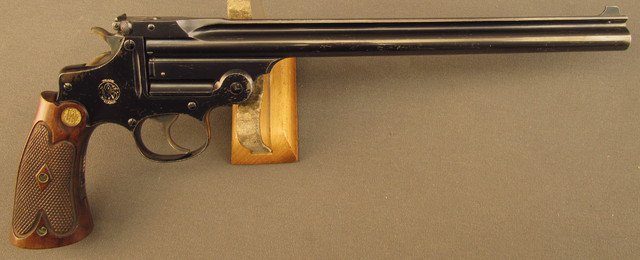I suggest you drill out a way too thick billet of steel. Then,you can mill the billet down to get the bore on center. You hopefully will not drill a CURVED hole. I would not use a parabolic bit. They are too easily deflected. If you use a D bit carefully and gently,you should be able to drill a straight hole that is pretty close to centered. Since your drill will be long and more flexible,you need to be extra careful to not flex it while applying pressure to make it drill.
Keep your D bit sharp. There needs to be a slight angle on the front end,as Wermie's sketch tried to show. The cutting edge needs to be foremost. Of course,there needs to be a clearance angle as well. I suggest after grinding,stone the cutting edge with a fine India stone.
A tricky part in making a D bit is to not have the half diameter part warp while hardening and quenching. Just heat up the tip where it cuts. Dip that into the quench just at the cutting end,then lower the drill slowly. Or,you can harden the bit in the round and grind it to half diameter + a few thou. That might be the best way to proceed. A belt grinder,if you have one,will make less heat with a new,coarse blue belt. Switch to a finer one when you get near 1/2 diameter. The cutting edges of your drill need to be smooth on both surfaces where the surfaces come together. DIP your D bit every 2 seconds of grinding with a SHARP belt. You don't want the 01 steel to turn blue. I dip,leaving water on the tool. When the water sizzles,I dip instantly. Have the can of water very close to your grinding.
If you make the D bit's 1/2 diameter part about 1" long,you will have to withdraw the bit about every 3/32" of drilling,or less,to clear the chips,which you must not allow to overload. Keeping patience is essential.
P.S.: A more standard practice these days is to use permanent Loctite,a 600 series. I can't recall the exact number,but they even stick double barrel shotgun barrels together with it. It seems like a miracle,but it will hold together with the shock of firing. My friend Jon,a trained gunsmith,uses it.

